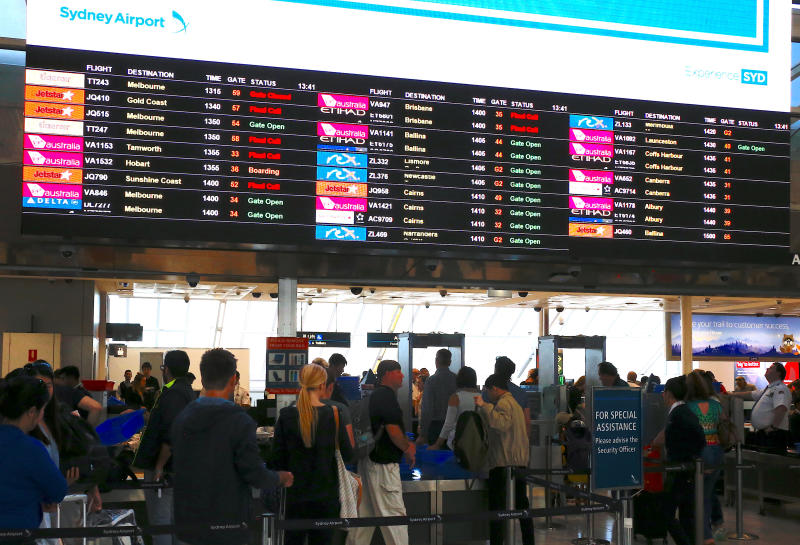'Contactless' scans to clear travellers at Aussie airports
Sign up now: Get ST's newsletters delivered to your inbox

Canberra to test biometric tech that identifies person without need for passport to be shown.
PHOTO: REUTERS
Jonathan PearlmanFor The Straits Times in Sydney
Follow topic:
For almost a century, international travellers have needed to stop at border crossings and produce valid passports, but they could soon become obsolete.
Within the coming months, international passengers arriving in Australia will be able to walk straight to their baggage without needing to reach into their pocket or bag to produce their passports.
The new world-first "contactless" technology - part of the federal government's "seamless traveller" initiative - is due to be trialled at Canberra's international airport in the coming weeks, and will be rolled out across the country from next year.
Canberra Airport's international flights are currently operated by Singapore Airlines and include flights to Singapore and Wellington in New Zealand.
The Department of Immigration and Border Protection said the new technology will improve border security and enable a smoother passage for travellers.
The government's plan is to allow 90 per cent of eligible travellers to "self-process" at the border through its SmartGates by 2020 - a scheme that will assist airports to deal with soaring numbers of visitors in coming years.
SmartGates now allow passengers to scan passports, but the new gates will rely entirely on biometric identification.
"Contactless functionality will be added to all arrivals SmartGates commencing 2018," a department spokesman told The Straits Times.
"'Contactless' allows increasing numbers of travellers to clear the border without the need to present a travel document by using biometric facial recognition to verify their identity. However, travellers will still be required to carry a valid travel document."
The department's spokesman refused to comment on the details of the coming Canberra trial.
Australian airports currently clear about 40 million passengers and crew a year. Surging tourist numbers and business travel are expected to increase passenger numbers to 50 million annually by 2020.
Experts said the biometric technology is "foolproof" and poses no foreseeable security risks.
The biometric recognition will be based on faces, irises and possibly fingerprints and gait.
It is understood that biometric data will be matched against data which was previously captured from passengers at departure gates as they were leaving the country.
Some countries may also share their biometric data with Australia.
Mr Matthew Abbott, a former consultant to the Department of Immigration and Border Protection who is now the regional head of aviation design at architecture firm Woods Bagot, said he believed the technology could ultimately make passports obsolete.
He said airports could easily apply the technology to outbound passengers and eventually put an end to both travel documents and airport queues. "This will be the first contactless automated border control globally," he said.
"The majority of people who use an airport will be able to use the terminal unhindered. That is where the technology is going."
The government is also reportedly planning to end the need for arrival cards. It could potentially rely on existing data about passengers on government databases, as well as information from airline processing systems.
According to a report in the Australian Financial Review on Oct 6, the government plans to trial the contactless technology at Sydney Airport as well as Canberra from next month.
The technology will then be rolled out across the country's nine biggest airports - including Melbourne, Perth and Brisbane - in the second half of next year.
Some analysts have suggested that the technology could reduce the amount of time that passengers spend at airports and therefore reduce their shopping time.
Australia's largest airports receive about 25 to 40 per cent of revenue from their retail spaces.
Strategic Aviation Solutions chairman Neil Hansford believed the system would add to airport revenue because passengers would have more time to shop.
"Most people, especially leisure travellers, get to an airport nice and early," he told The Straits Times.
"As long as the airports have enough gates, this technology will mean less queueing. It could also take up less real estate at airports."
Mr Hansford agreed that biometric technology is more secure than relying on facial recognition from passports.
"You are relying at the moment on the Customs officer identifying the picture of you, which can be up to 10 years old," he said. "With this, there is no human intervention. It is much more exact and more secure."

